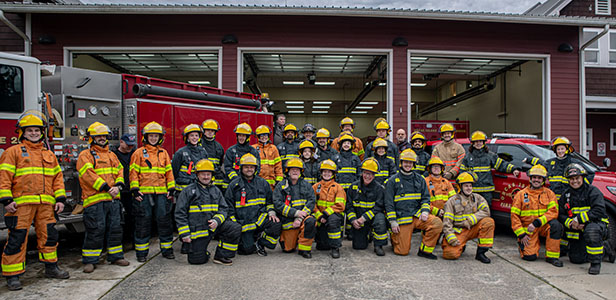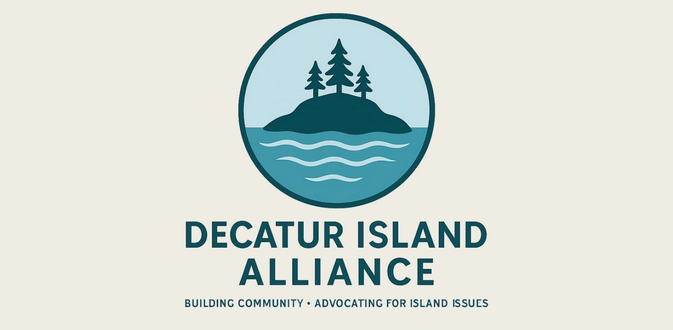— a semi-regular humor column by Maurice Austin —
Much of the discussion of the health of the southern resident orca population focuses on nutrition—those apex predators rely on Chinook salmon for the majority of their diet, and given that salmon are racing toward extinction, the southern residents orcas may well be following suit.
Good grief—they gobble 500 pounds a day, ingesting something like 3 million times the surgeon general’s recommendation per month. Don’t they know how much pollution bio accumulates in the bellies of those King salmon? And, of course, they have to contend with environmental stressors—parasites such as roundworms, tapeworms, and whale-watching paparazzi.
That they can’t find Chinook is perplexing, since all it takes is a trip to the Tulalip tribal member selling fish from the back of his pickup along exit 200 on I-5, rain or shine, fisheries opening or no. Alternatively, in season, meaning now, it’s hard to miss the spray-painted plywood sign advertising “fresh” sockeye at $20 per fish right in Concrete, along the little stretch of the Baker River below the spillway, where the tribal boats cluster.
The situation has become so dire that Canada’s Department of Fisheries and Oceans has approved a plan to raise Chinook for the express purpose of feeding resident orca whales, despite opposition from groups who maintain that restoration of the Fraser River is what is needed, not a handout of net-pen raised fish. Alas, the “let’s feed them” vs “handouts are socialism” debate threatens orcas not only with “subsidized” status, but equally damming, “managed”.
When I worked at several net-pen facilities in Norway, between feeding the fish and washing nets, great fun could be had by dropping a piece of fish food on a hook outside the net, because wild salmon were attracted to the food supply, and would semi-residualize. Which is all, really, the southern residents have done, perhaps: they liked the bait, and liked what ate the bait, and liked the view, and settled in, eschewing their farther-swimming transient cousins.
Never mind the dams, Never mind the human population spike and associated shoreline development and ever-increasing non-point pollution and dredging and rip-rapping and logging, Never mind the wild runs of salmonoids “managed” and subsequently “mitigated” by hatcheries which diluted salmonoid genetics, spread parasites such as sea-lice and terminal-area anglers, and so contributed to the decline of western salmon that wild fish proponents are now suing to remove hatchery programs initially hatched as beneficial, rather than detrimental. They residualized; here they are; here are us.
And they’re eating Chinook. So…what are the resident Chinook eating?
Alas, on the dark, dark day of June 4, 1972, when the Cherry Point herring were in spawn, and because an ARCO employee was asleep at the switch, some 21,000 gallons of crude was pumped into that vital estuary, leading perhaps to permanent genetic deformities present in the Cherry Point herring population, observable by those who observe such things, to this day. Not that it curtailed the herring roe fishery at first. Or, even, at second, for that matter. Took a couple decades for politics to catch up with science—though doesn’t it always? Was money to be made, after all.
Those who favor breaching dams take note: while it’s easy to point a finger at the Columbia and Snake River dams, the southern residents who frequent the San Juan Islands in the summer more likely prey upon Fraser, Skagit, Stillaguamish, Nooksack, Samish and other Puget Sound tributary Chinook, casting a net of consequence over not only tribal netters who have been corking off those streams, (where have the chum gone?) or commercials who seine off the mouths, but also upon the hydroelectric projects on the Skagit system. The Baker River installment, for example, likely wiped out 1/3 of the anadromous fish runs in the basin, and recent lawsuits mitigating the mitigation of the hatchery at Marblemount means what—no more hatchery fish, so no more fish, because hatcheries harm wild fish. So: the hatcheries initially established to mitigate the destruction of runs due to hydroelectric projects have been decreed to further negatively impact runs, and besides that they’re expensive and full of parasites like sea-lice and state-employed fisheries technicians.
Thus “management”: a cynic would say, The more managed, the worse off. Might just be the orcas would say what they really need is for us to piss off, thanks much, leave us alone, we’ve been through ups, downs, your shooting GPS devices into our dorsal fins hurts, and why have you let them rip-rap that chunk of beach, used to love rubbing there, and sheesh quit following me around like vultures already, what are you, sick? Lonely? Lost?
But. The problem with issues of the environment, generally, is that everybody is de facto an expert, because we all live in the environment, and some of us even make our livings off it, by farming or logging or catering to tourists who pay good money strap themselves into a tourist whale-watching boat with three 250 hp Johnsons to get a glimpse of an orca, or a seal, or a porpoise. On purpose, nonetheless. It’s said the through-prop exhaust of such engines secrete refined dollar bills, but those who owe their lives to the kind actions of whale-watching captains who respond to “mayday” and “pan pan” calls over the VHF might suggest they exhaust pure gold.
Hmm…I wonder how many calories are in a seal? Or, toward that purpose, a porpoise?
Canada may be content offering a handout, but our system, which isn’t socialist, which shouldn’t promote giving a fish a fish, but instead teaching a fish to fish, should strive toward higher goals, should establish an orca health network based not upon a single-payer system, but upon free-market piscatorial protein policies enabling fishy insurance agent “death panels” to oversee aquatic nutritional programs. And: physical therapy, since it’s so much cheaper than actual treatment.
Training programs refocusing orca appetites might best focus on strategically painting local seals—furbags of which we seem to have a surplus and which the more robust populations of transient killer whales certainly delight in—in more fishy colors, painting them in scales perhaps, and even shaving them to facilitate the attaching of artificial dorsal and adipose fins, to mimic the appearance of Chinook. Why give an orca a fish when we can rather teach an orca to fish for what isn’t fish?
We’re not, alas, going to curb our population; we’re not going to reduce our pollution or logging or agricultural or ranching footprint in salmon-bearing river basins; we’re not going to quit harassing orcas on their daily rounds. So let’s give ‘em a fighting chance. A few weeks in a training pool each, staffed by appropriately certificated orcas transients, and our beloved residents might realize their appetite for Chinook was fleeting, and nothing compares to seals. Nothing compared, except, to you. You there, on that kayak, looking so seal-like. But never mind that, of course.
Neither are we fragile islanders, addicted as we are to our information and electron streams, likely to begin petitioning for the removal of the Skagit River’s hydroelectric projects, inasmuch as it would mean the dark days of winter would be…well, darker, shore-side, at least. Unless we agree to fund a green coal co-generation facility, perhaps, or maybe put Volkswagen in charge of a new green tar sands electricity generation station. Could we power a co-gen installation by burning tourist dollars? Hm.
Still, it’s time we step up the whales’ game, get them onto a different diet plan, because we’ve seemed incapable of stepping down our petroleum herbicide pesticide hydroelectric population tourist septic logging slug bait brake shoe road salt hydrocarbon ways….as of yet, at least.
Your millage per board foot may vary, of course.
**If you are reading theOrcasonian for free, thank your fellow islanders. If you would like to support theOrcasonian CLICK HERE to set your modestly-priced, voluntary subscription. Otherwise, no worries; we’re happy to share with you.**







